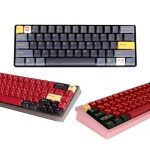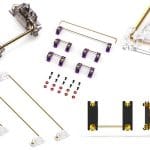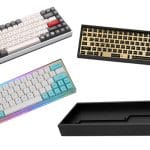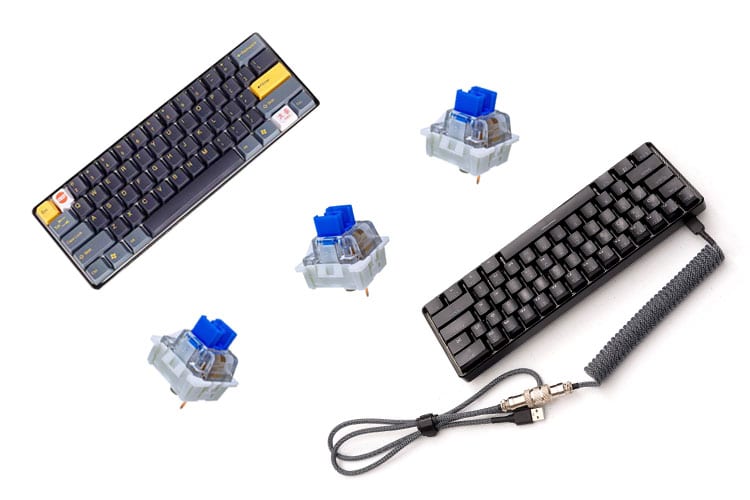
Buying an external keyboard may be daunting to many since the keyboard market offers so many options. Depending on your budget and needs, you can end up getting a small Bluetooth membrane keyboard or a fully custom mechanical keyboard kit. The market also caters to those who like keyboards that produce a relatively audible typing sound and tactile feedback – in other words, noisy. Why is that so?
Some people prefer a noisy keyboard because a keyboard’s unique sound signature is part of getting into keyboards. Whether buying a mechanical or membrane keyboard, every keystroke produces an audible sound that accompanies your working or gaming experience. Certain benefits come from an audible typing sound, such as allowing for more recognizable and tactile feedback.
When purchasing a keyboard, one of the most important factors that keyboard hobbyists consider is the overall sound of their keyboard. That’s why many hobbyists recommend looking into a keyboard’s sound profile before purchasing. You can compare a keyboard to an orchestra, where each part contributes a unique sound and ultimately becomes a significant part of the typing experience.
In this article, we will be discussing the components that affect a keyboard’s sound signature. We will likewise take you through the most common types of keyboards and their respective sound profiles to guide you as you find the best sound signature for your typing experience.
What Makes a Keyboard Noisy?
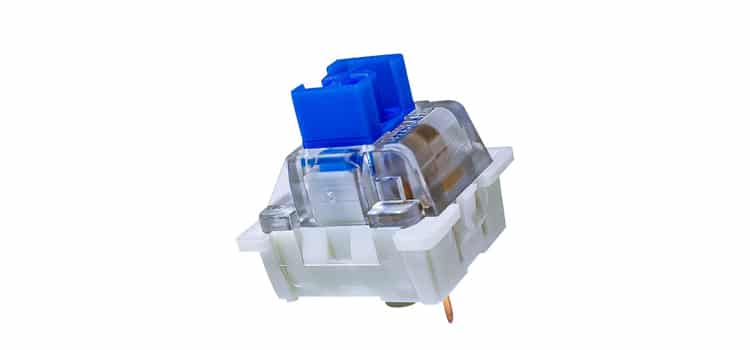
As mentioned earlier, the way a keyboard is constructed contributes to the distinct audio experience produced by the specific board. This is unique to every keyboard, given that no keyboard is made and designed identically except for OEM products or if we are talking about what fundamentally makes a keyboard. Several factors that affect the sound of keyboards include case material, mounting style, added weights, and a lot more.
Keyboard components work to either diffuse or emphasize a keyboard’s sound. For example, your keyboard case affects the overall sound of the keyboard because of its large size and hollow nature. Consequently, the case’s material is highly significant in the keyboard’s auditory experience. Case foams exist to mute the high-pitched sound produced by the case’s hollowness, while keycaps serve to emphasize your keyboard’s acoustics.
In sum, each press of a key reverberates inside a keyboard and makes noise. The combination of specific keyboard parts affects the noise that a keyboard produces.
The Sound that Keyboards Make
Now that you know how keyboards make noise, it’s time to delve into the primary sound-making machines in keyboards: the keyboard switches. Keyboard switches are easy to change on mechanical keyboards, especially with hot-swap PCBs. Changing your keyboard switches can give an overall new typing experience. This feature is handy if you’re easily bored and you’re thinking of switching the kind of keyboard switches you use.
Unfortunately, changing switches is not an option for membrane keyboards, as they are embedded between layers. However, they are a good keyboard to go for if you don’t feel the need to go for the customization route that mechanical keyboards offer. They are also great if you prefer to work in quiet environments as they provide a muted and sometimes even silent acoustic experience.
Membrane Keyboards
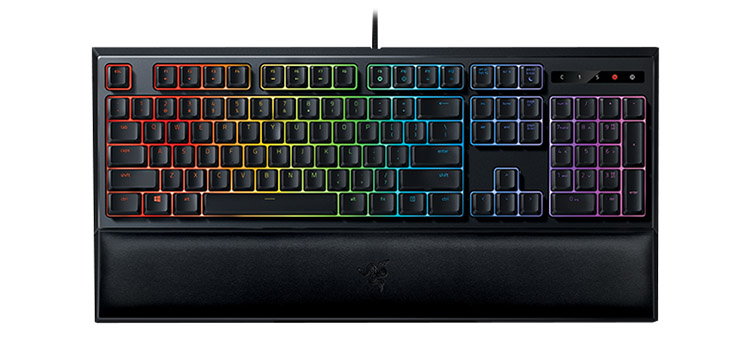
The keyboard switches are sandwiched between two thin membrane layers in membrane keyboards. These layers are commonly made of polyester, silicone, or rubber. Collectively, they can be known as rubber-dome or membrane-type switches. These switches, along with their accompanying material, give an overall more muted sound when compared to other kinds of keyboards.
These membrane layers are laced with conductive traces, allowing the keyboard to register the press of each key. This registered key is then sent to the central processor, your laptop, desktop computer, or any other electronic device in use, and paired with your keyboard.
Membrane keyboards are commonly seen in portable devices such as laptops. You may also use the membrane mechanism in keyboards in external keyboards as they are cheaper to manufacture and are thus more affordable to buy.
Mechanical Keyboards
In mechanical keyboards, the keyboard switches are more customizable to your experience. Each switch is a singular mechanism that makes it easy to replace when you encounter problems and change if you’re looking for a different typing experience.
In terms of typing sound, a mechanical keyboard is not superior to a membrane one per se. Again, it is a matter of personal preference. For everyone’s guidance, let us look at how the different types of mechanical switch sound as described below.
Red Linear Switches
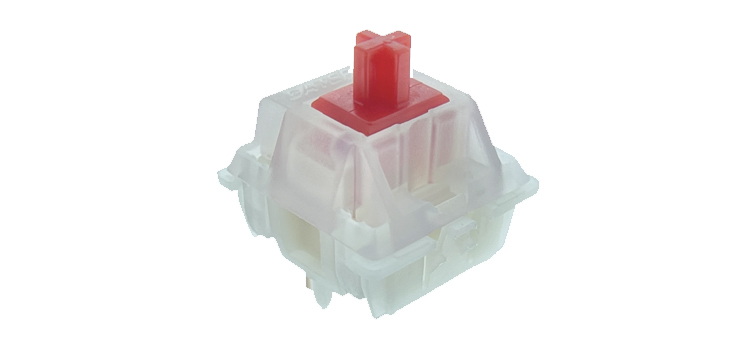
Red switches are linear switches. This type of switch easily bottom-out when you press them, and linear switches do not have a tactile bump when you press on them.
This type of switch provides a smooth and relatively quiet typing experience, especially when compared to other types of mechanical keyboard switches. We recommend these switches if you prefer a more muted typing experience but still want the range of customization that comes with mechanical keyboards. Linear switches are also great for gamers as they are easy to press even after prolonged use.
Other common linear switches include Gateron Milky Yellows and Cherry MX Blacks. Some top-of-the-line linear switches include the NK Creams, Durock POMs, and Gateron Box Inks in either Black or Pink.
Brown Tactile Switches
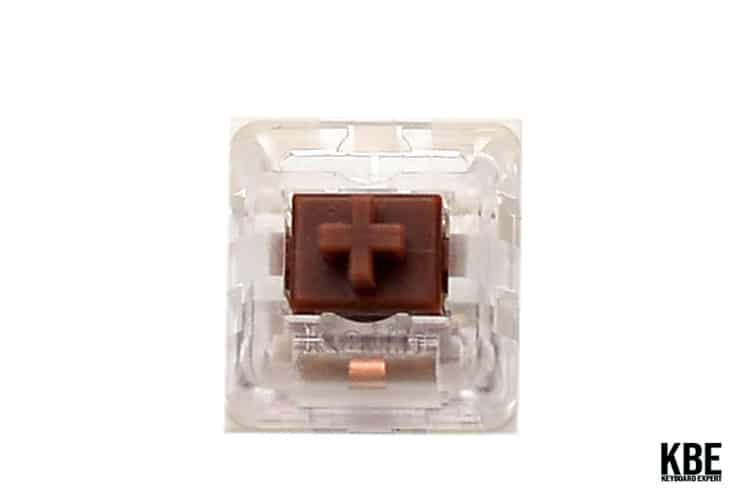
Brown switches are tactile switches. This type of switch provides a tactile bump before bottoming out. In this way, the tactility aids users in avoiding typing errors.
They provide a more sonorous experience than linear switches but are known to cause fatigue over time. We recommend tactile switches for beginners looking to get into the mechanical keyboard hobby and professional typists such as authors, developers, and journalists.
Other common tactile switches are Outemu Browns, Cherry MX Clears, and Feker Holy Pandas. Some premium tactile switches that are raved by the keyboard community include the Boba U4Ts, Harimaus, and White Jades.
Blue Clicky Switches
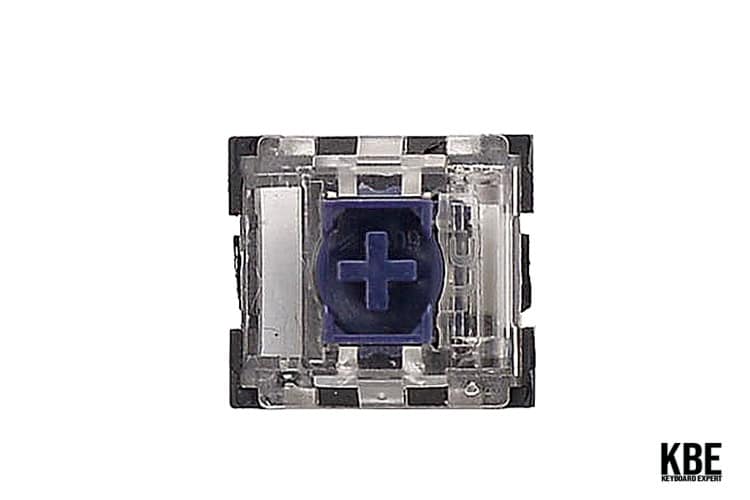
Blue switches are clicky switches, and this type of switch is by far the noisiest to type on. Aside from a tactile bump, clicky switches also have a click bar which produces a clickity sound for every keypress.
Clicky switches are perfect for users who want the most out of their acoustics. Users often say that this type of switch gives similar sound feedback to typewriters, so if you’re looking for a typewriter-like sound, then clicky switches are for you.
Other common clicky switches include Gateron Blue and Gateron Green switches. Some top-of-the-line clicky switches include Kailh BOX Navies and Kailh BOX Jades.
Why do Some People like Noisy Keyboards?
People liking noisy keyboards have been the subject of many internet debates. But, the rise in users of these so-called “noisy” keyboards started when most users were bound to work at home.
These users sought to maximize their working environment, even while at home, by decorating and upgrading their respective computer and laptop setups. Owning noisy keyboards became a way to induce a better working environment, add satisfaction to their day-to-day work life, and acquire an up-and-coming and more personalized working space.
Induced Working Environment
With many users working from home due to the pandemic, it’s pretty challenging to keep yourself motivated to work. Having a space dedicated to work is one thing to keep your headspace focused, but what if you miss the office ambiance?
Having a noisy keyboard can help ease the loneliness of working from home. Loud keyboards help their users in creating an office ambiance. Such triggers higher rates of productivity. The induced working environment can also help boost motivation and other positive emotions.
According to a Forbes article, investing in your office ambiance, whether in literal office spaces or working-from-home, will change the mood of workers from “counting down the minutes to freedom” to looking forward to coming and showing up for work. This change in ambiance and spirit is also effective for students seeking to achieve more in their respective grade levels.
More Satisfying To Type On
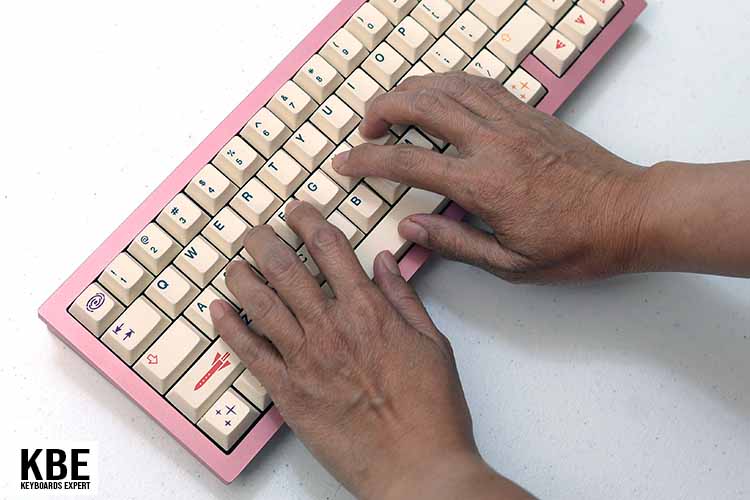
Many users also report that noisy keyboards are more satisfying to type on. The satisfactory feeling from every keystroke comes with the combination of tactile and auditory feedback that the switches provide in a keyboard.
This positive association with typing aids productivity. Because you like the feeling and sound of the way you type, you are much more likely to be encouraged to type more and, thus, work more.
Unique Sound Signature
Noisy keyboards, especially mechanical keyboards, have a unique sound signature for every keyboard. Since every keyboard is made and built differently, each keyboard (whether membrane or mechanical) can provide a different acoustic experience. Moreover, the customization options of mechanical keyboards also allow the user to build and/or acquire a keyboard personally suited for their needs.
One of the best things about being a keyboard enthusiast is discovering which keyboard sound profile works for you, whether that’s loud, silent, creamy, poppy, or thocky.
Why Do People Hate Noisy Keyboards?
Other people may be annoyed with the use of noisy keyboards. They may think that the noise contributed by a loud keyboard decreases their productivity and, in essence, affects their work processes.
First of all, using noisy keyboards may limit the spaces you can use your keyboard because more quiet environments such as the library may ban its use.
Second, it may be distracting when you’re unmuted during office calls and other meetings since it has a distinct sound accompanying every keystroke.
Finally, it can make it hard to think for people who prefer working in quiet environments.
Yet, using noisy keyboards can be a fun hobby that may also aid your productivity. Just make sure to be open to discover which keyboard sound profile works best for you. And, if you’re using mechanical keyboards, make sure to have a batch of silent switches at the ready if you plan on working in a library or a study area.

